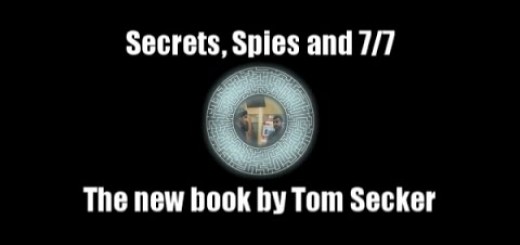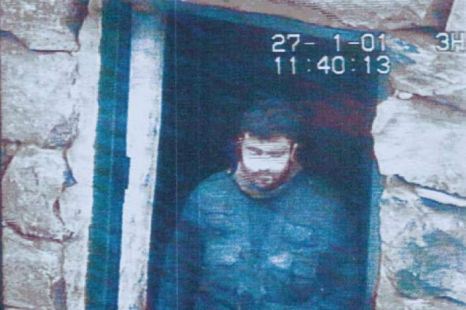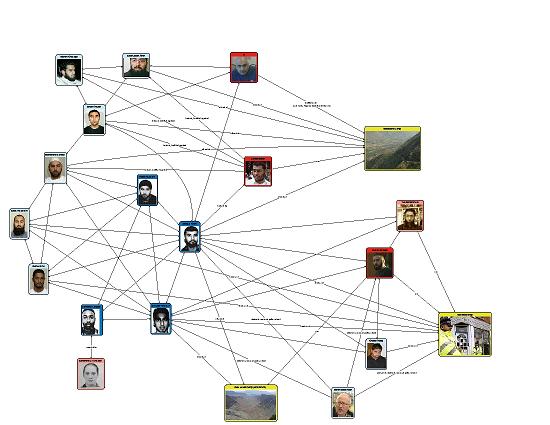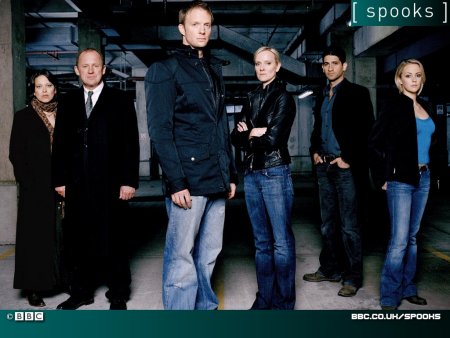
Secrets, Spies and 7/7 – by Tom Secker.
Paperback & Ebook: http://www.spyculture.com/secrets-spies-and-77/
We’re coming up to 8 years since the July 7th, 2005, bombings in London, yet sadly we’re still very far off from learning the truth and the scope of what happened that day. The mainstream media is awash with inaccuracies and conflicting information, and has a penchant for giving the state an easy ride, even when their claims are flimsy under the microscope.
Generally the press have concluded what MI5 and the Government have concluded…that 4 self-radicalized British based Muslims were responsible for the tube and bus attacks, and it was a simple case of Al Qaeda inspired terrorism. Though that might seem reasonable to some, this theory has never been established in a court room. There’s never been a trial because the accused are presumably dead, and there’s never been an inquiry to fairly examine the allegations against them. The alleged bombers’ accused accomplices were found innocent by a jury, and the belated 2010 7/7 Inquest gave no opportunity for a cross examination of the “evidence”. While the gist of the official story is well established, the devil is in the detail.
Tom Secker’s debut book Secrets, Spies and 7/7 has accomplished what nobody else has managed to do…an honest and critical analysis of the available evidence. And that’s not just a self-righteous conspiracy theorist caveat. Secker not only picks apart the contradictory, vague and ambiguous official Home Office narrative and Intelligence and Security Committee reports on the attacks – as well as the more recent inquest – but also the leading alternative theories, such as those explored in John Hill’s 7/7 Ripple Effect documentary series and the book by Nick Kollerstrom. This is a much needed breath of fresh air on a topic that has been polarized as Official Story vs Conspiracy Theorists, when both sides have equally weak arguments.
Tom also spends time critiquing the mainstream media, who seem more focused on parroting official statements, addressing the alternative theories or postulating their own theories, than investigating the event itself or critically analyzing the information passed to them by Government or Intelligence sources.
While the 7/7 Inquest did bring forward a lot of new information, none of it really gave credence to the Government’s theory about what happened. In fact more often than not it discredited and contradicted the official story. As Secker demonstrates we’re at a stage where we know what the Government are alleging – that these were home-brewed suicide bombings.
We know a lot about what MI5 were doing in the run up to the bombings – making a lot of careless “mistakes”. And we now have access to a lot of the source material and “evidence” previously only cited by official reports. Unfortunately a large amount of this “evidence” does not gel with the official story, in-so-much that there is one.
This fantasy land of contradictions would have us believe for example, that the alleged bombers were home grown extremists not linked to a wider network…though two of the four also received overseas Al Qaeda training and were investigated on the periphery of another terrorism related case. Anyone with a brain is going to experience some cognitive dissonance here. The picture is painted that they were terrorists, but for whatever reason we’re not supposed to look deeply in to those links and MI5 aren’t responsible for not realizing them at the time.
The alleged bombers are said to have used homemade peroxide/pepper bombs….though none of this was found at the scenes and none of them were forensically linked to any such material. So how do investigators know the bombs were homemade or that they made them?
“They must” have been on the trains and bus as the official narrative noncommittally states…though there is no CCTV to confirm this and nobody can agree where they saw them (if anyone really did). Diagrams created by numerous officials detailing positioning are so mismatched it’s hard to even know what ends of the carriages everyone was at, or how many bombs there even were. There were almost certainly multiple blast holes in at least one of the train carriages.
In other words the official story in terms of detail is false, but in the absence of an independent inquiry, a trial by media has convicted the men. They are assumed guilty based on a haze of Muslim prejudices and sound-bites from officials. And because the Government have never had to present their case on a critical and judicial platform, they’ve gotten away with using a rough draft…one that completely falls apart under Secker’s examination.
Secrets, Spies and 7/7 traces the development of the offical and alternative theories from the beginning. What they all have in common is that they assume guilt or innocence respectively, and then massage “facts” and “evidence” in to place to tenuously support them. For example it didn’t matter to the Home Office or mainstream media that number 32 bus eye witness Richard Jones described somebody dressed completely differently to the accused bomber Hasib Hussain, because he claimed to see an Asian man fiddling in his bag and that was enough to fit their preconceived notion that this had all the “hallmarks of Al Qaeda”. Thankfully Jones was discredited at the inquest, but there are many more examples of investigators and the media cherry picking evidence or hearing what they want to hear. As Secker explores, this isn’t surprising. As seen with the Iraq war invasion, intelligence at that time was being fixed around the policy and there’s no reason to think it stopped with Saddam and didn’t continue with “Al Qaeda”. At one point Western Governments were even trying to link Saddam to Al Qaeda.
Likewise the conspiracy theorists were also biased. For example it didn’t matter to Nick Kollerstrom or John Hill that a CCTV still of the alleged bombers at Luton station they said was fake was later supported by moving video evidence. They either ignored it or continued to assert that CCTV had probably been faked…the hallmarks of the “Satanic New World Order” and an inside job, as former police intelligence analyst Tony Farrell describes it. Either way this is an absurd method of reaching truth, and Tom does not fall in to either side of the trap.
What does surround the 7/7 case are the “hallmarks” of an intelligence operation, one that was full of failures. Such as failing to identify and monitor alleged bomber Mohammad Sidique Khan and share his information between agencies, despite him cropping up as far back as 2001. Yet while MI5 can’t even admit these failures and the mainstream media are content with them being failures, Secker poses a new and more frightening question. What if the failures were successes?

At the very least the book demonstrates that the authorities have lied about and distorted the amount of data they had on Khan. At every turn MI5 refused to cooperate and downplayed any wrongdoing. At the inquest they sent a non-operational employee with no 7/7 experience who was allowed to remain anonymous. Plain and simply there is a cover-up. But a cover-up of what?
Drawing from historical examples from the Irish troubles, it is not inconceivable that the security services had informants or double agents surrounding the alleged bombers in the years before the attacks. At least two suspected terrorists who seem to have had key interactions with Khan were simply allowed to vanish from the investigation. Another – Omar Khyam – was bugged telling Khan that there were going to be raids in 2004 stemming from the fertilizer bomb plot, which is rather prophetic if he didn’t have some kind of insider info. He would later refuse to cooperate at the 2007 trial, fearing Pakistan’s intelligence service would harm his family. On the other side of the pond FBI supergrass Junaid Babar, who allegedly trained Khan in Pakistan was given only a couple of years in prison thanks to his cooperation in ratting out his various associates (or making stuff up).
Having researched 7/7 extensively myself this is where I reach a brick wall. A critical analysis of the evidence would suggest the 4 accused are innocent, or at least that the investigators did a horrendous job of piecing together the evidence. However an analysis of MI5’s surveillance of Khan and to a lesser extent Tanweer in the years before the attacks, suggest if they did carry them out, they were enabled and pushed along at key points by various characters with ties back to MI5.
The question then becomes, were the alleged 7/7 bombers shielded from investigation to protect the identity of people working with or for the security services, and the attack went ahead unimpeded, as we’ve seen before during the Irish troubles? Or as Tom also explores, were they being subtly implicated for something they didn’t even do by a concocted history of missed opportunities/ intelligence failures? At each key point that would suggest Khan was becoming more radicalized, it was through one of the dubious characters who have since slipped away.

Whatever way you choose to look at it, the security services are in a convenient position of plausible-deniability. “Look we have all this back-story that they were extremists, but we couldn’t stop them”. Is this back-story even true? And if it is, did they even want to stop them?
In the final section of the book Secker observes the cultural acceptance (and non-acceptance) of Muslim Terrorism within British society. In the years prior to 7/7 the tax-funded BBC were responsible for propagating the Muslim terrorist threat through their MI5 drama Spooks. The series was almost preoccupied with hammering home the idea that Muslims are capable of suicide bombings in Britain. However it promoted this concept before it became a reality (if 7/7 really was this reality). In that respect Spooks, along with innumerable factual TV shows based around preparation for terrorist attacks, and real on the ground preparation drills within the emergency and security services, in effect normalized 7/7 before it even happened.
The fact that the London Bombings weren’t prevented have rendered this preparation useless, yet psychologically it has conditioned the public to accept a threat that for the most part is greatly exaggerated, and in terms of 7/7 not even proven in a court of law. More intriguing is that not only did Spooks predict similar attacks to 7/7, it also predicted and later reaffirmed some of the leading alternative theories about what happened as well. Life imitating art.

Has society created its own reality based on its own nightmares? Or is it more sinister, in that the state were deliberately fixing the intelligence around the policy, to the point of propagandizing the public and the conspiracy-minded within it? Of course we can’t wrap this all up in a neat bow, but it is fascinating nonetheless and not something to be dismissed out of hand.
Secrets, Spies and 7/7 has breathed some much needed new life in to the London Bombings case by challenging both the establishment view and the leading alternative theories of what happened. It does this not through speculation or further theorizing, but a logical and rational analysis of the evidence so far. Secker provides copious citations and documents for the book, which can all be explored on a page at his website InvestigatingTheTerror.com
Whether this advances the cause of truth is really down to you the reader.




